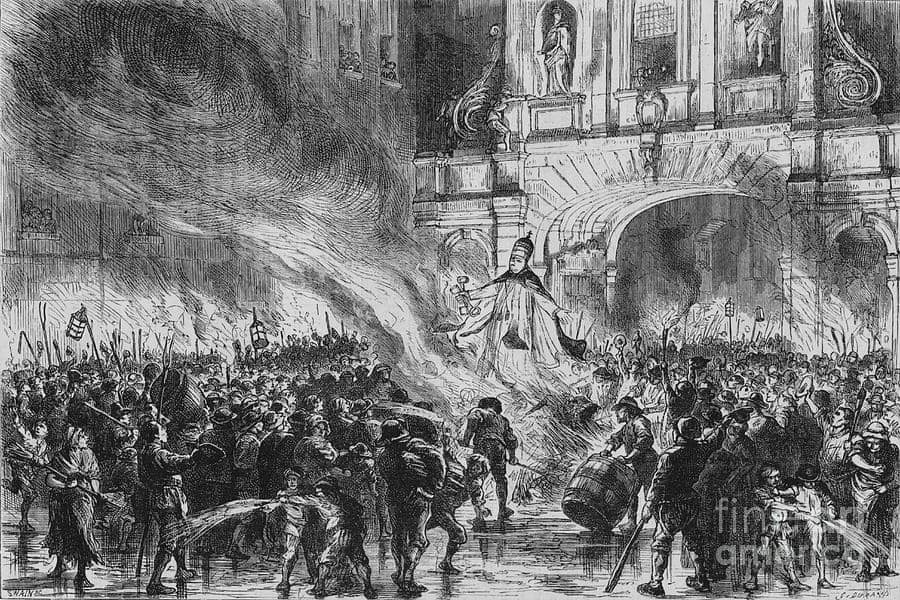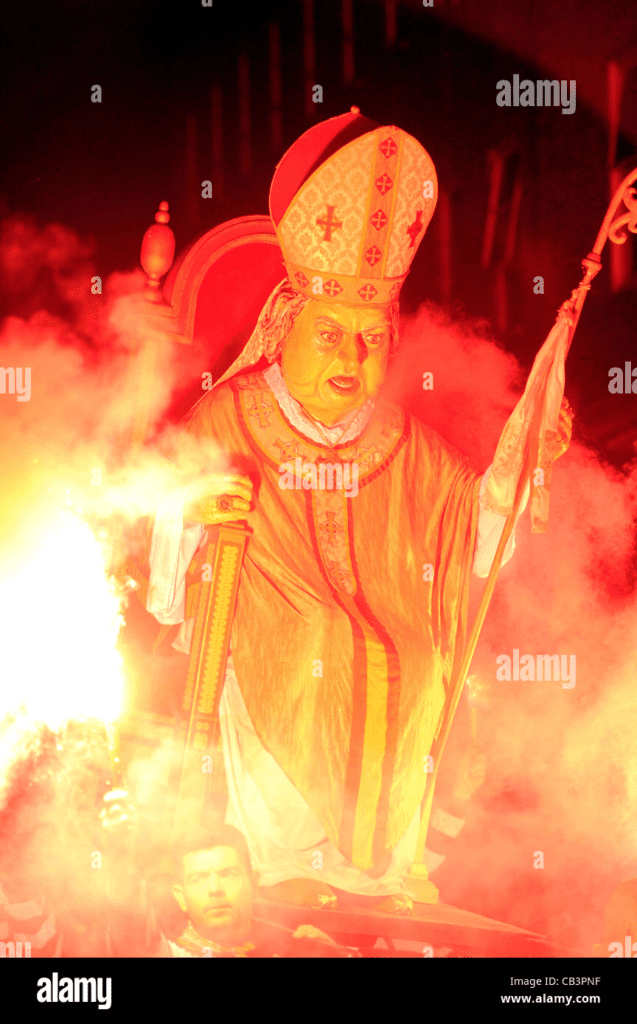They used to burn the pope on bonfire night, not Guy Fawkes

You may think the tradition of burning Guy Fawkes dates from 1605, when he was hanged for attempting to blow up parliament, but for the first 150 years it was the pope that got thrown on the bonfire.
In 1606, a year after the Gunpowder Plot, it became mandatory for all English churches to hold a ceremony on November 5th to mark the failure to blow up parliament. This soon developed into bonfires, puppet shows and military salutes. From 1673 crowds began parading around an effigy of the pope and then burning it on the bonfire.
The Gunpowder Plot was a highly religious affair. It was an attempt by catholics to kill protestant King James I, hopefully instigating a catholic uprising and converting England back to Catholicism. By burning the pope every November 5th, protestants were celebrating their triumph over the catholics.
This practice of burning the pope on November the 5th continued until around 1800. In the 1790s, English Catholics and protestants fought together against the French. After this there was a thawing of Protestant/Catholic relations and so they decided to stop burning the pope. Instead, they burned Guy Fawkes (Guy Fawkes didn’t actually organise the Gunpowder Plot, he just lit the fuse, maybe they should burn Robert Catesby instead)

Pope Night madness in USA
The tradition was transported with puritan English settlers to America who began settling in the early 17th century. In New England and Boston it evolved into a more riotous affair than its English counterpart, with heavy drinking, brawling, dressing up, shaking down wealthy residents, smashing windows and of course burning large effigies of the pope. It was known as ‘Pope Night’ but also became a working class protest against the elite ruling classes.
Pope Night came to an end around time of the American Revolution. There are two possible reasons; firstly; America was trying to get Canadian Catholics to fight for them against the British and it wasn’t very conducive to be burning their head of church. Secondly; November 5th celebrated the failed attempt to blow up the British Parliament and, now that Britain was the enemy, it didn’t make much sense to celebrate that.
As the Commander in Chief has been apprized of a design form’d for the observance of that ridiculous and childish custom of burning the Effigy of the pope—He cannot help expressing his surprise that there should be Officers and Soldiers in this army so void of common sense, as not to see the impropriety of such a step at this Juncture; at a Time when we are solliciting, and have really obtain’d, the friendship and alliance of the people of Canada, whom we ought to consider as Brethren embarked in the same Cause. The defence of the general Liberty of America: At such a juncture, and in such Circumstances, to be insulting their Religion, is so monstrous, as not to be suffered or excused; indeed instead of offering the most remote insult, it is our duty to address public thanks to these our Brethren, as to them we are so much indebted for every late happy Success over the common Enemy in Canada.[17]
George Washington, 1775
Featured image
The featured image is 19th century artist G Durand’s imagining of the Burning the Pope in Effigy at Temple Bar which took place in London Nov 1679.
Sources:
https://en.wikipedia.org/wiki/Pope_Night
From the Archives: How Guy Fawkes Crossed the Atlantic & Became Pope Night, 1745
https://www.english-heritage.org.uk/visit/inspire-me/real-story-of-bonfire-night/






